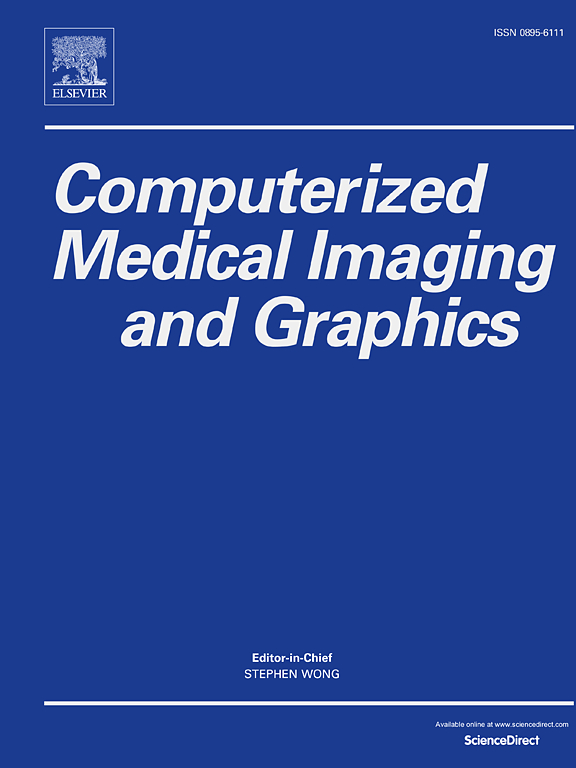A review of the Segment Anything Model (SAM) for medical image analysis: Accomplishments and perspectives
IF 5.4
2区 医学
Q1 ENGINEERING, BIOMEDICAL
Computerized Medical Imaging and Graphics
Pub Date : 2025-01-01
DOI:10.1016/j.compmedimag.2024.102473
引用次数: 0
Abstract
The purpose of this paper is to provide an overview of the developments that have occurred in the Segment Anything Model (SAM) within the medical image segmentation category over the course of the past year. However, SAM has demonstrated notable achievements in adapting to medical image segmentation tasks through fine-tuning on medical datasets, transitioning from 2D to 3D datasets, and optimizing prompting engineering. This is despite the fact that direct application on medical datasets has shown mixed results. Despite the difficulties, the paper emphasizes the significant potential that SAM possesses in the field of medical segmentation. One of the suggested directions for the future is to investigate the construction of large-scale datasets, to address multi-modal and multi-scale information, to integrate with semi-supervised learning structures, and to extend the application methods of SAM in clinical settings. In addition to making a significant contribution to the field of medical segmentation.
医学影像分析的片段任意模型(SAM):成就与展望。
本文的目的是提供在过去一年中医学图像分割类别中细分任何模型(SAM)的发展概况。然而,SAM通过对医学数据集进行微调、从2D数据集过渡到3D数据集以及优化提示工程,在适应医学图像分割任务方面取得了显著成就。尽管在医疗数据集上的直接应用显示出喜忧参半的结果。尽管存在困难,但本文强调了SAM在医学分割领域具有的巨大潜力。未来的研究方向之一是研究大规模数据集的构建,解决多模态和多尺度的信息,与半监督学习结构相结合,并扩展SAM在临床环境中的应用方法。除了在医疗细分领域做出重大贡献之外。
本文章由计算机程序翻译,如有差异,请以英文原文为准。
求助全文
约1分钟内获得全文
求助全文
来源期刊
CiteScore
10.70
自引率
3.50%
发文量
71
审稿时长
26 days
期刊介绍:
The purpose of the journal Computerized Medical Imaging and Graphics is to act as a source for the exchange of research results concerning algorithmic advances, development, and application of digital imaging in disease detection, diagnosis, intervention, prevention, precision medicine, and population health. Included in the journal will be articles on novel computerized imaging or visualization techniques, including artificial intelligence and machine learning, augmented reality for surgical planning and guidance, big biomedical data visualization, computer-aided diagnosis, computerized-robotic surgery, image-guided therapy, imaging scanning and reconstruction, mobile and tele-imaging, radiomics, and imaging integration and modeling with other information relevant to digital health. The types of biomedical imaging include: magnetic resonance, computed tomography, ultrasound, nuclear medicine, X-ray, microwave, optical and multi-photon microscopy, video and sensory imaging, and the convergence of biomedical images with other non-imaging datasets.

 求助内容:
求助内容: 应助结果提醒方式:
应助结果提醒方式:


